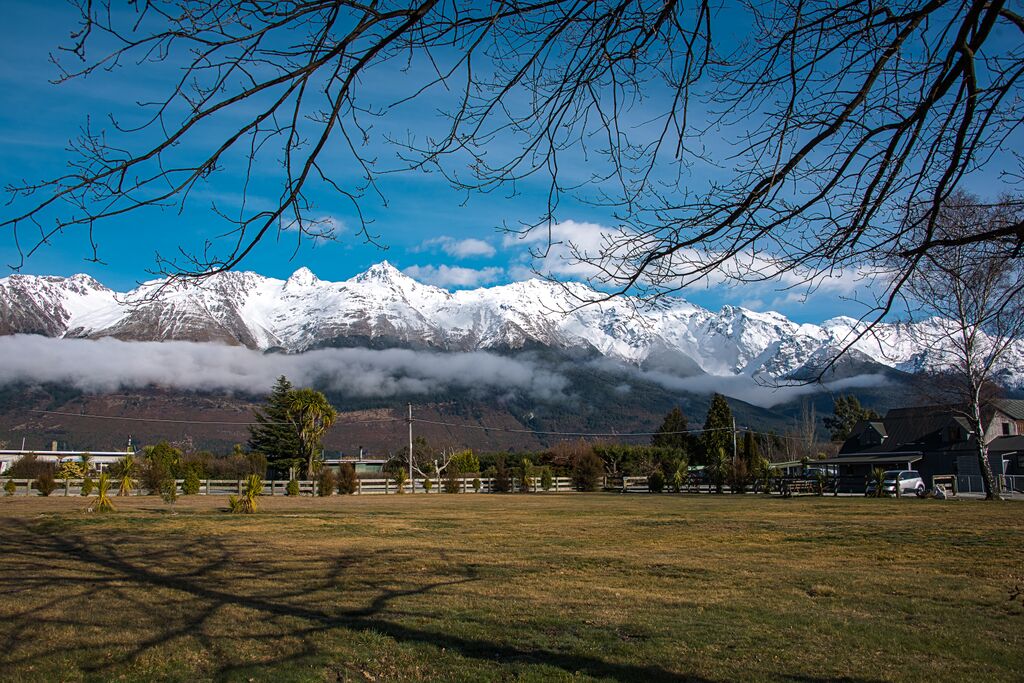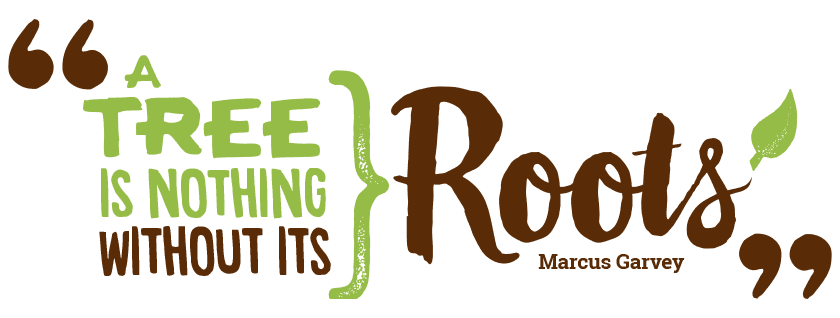- Accommodation

For centuries, human’s search for pleasure and aesthetic beauty were the primary concern when designing ornamental outdoor spaces to relax and recreate. While this pleasurable function of the landscape is undeniably important, regenerative landscape design addresses the need for outdoor spaces to be visually attractive to humans while also providing the natural function of the landscape to all forms of life, so the environment as a whole can thrive.
At Camp Glenorchy, the proposed landscape design aims to support native flora and fauna, to mimic the unique geology of the region and reflect the culture of the community. We are creating outdoor spaces which will educate and delight visitors, will reintroduce the surrounding landscape to the township and create safe and supportive habitats for native animals and insects.
Ever since the arrival of the Māori, New Zealand’s landscape has been continuously reshaped by human hands. Native bush was originally burnt to hunt moa and other bird species and later, with the arrival of European settlers, was cleared on a vast scale to create pasture for livestock. Such practices, along with the introduction of invasive predators and weeds has put great pressure on local flora and fauna.
As populations grew, more and more native bush gave way to buildings and roads, pastures and crops. Lifestyle gardens were mainly planted with foreign species to imitate ‘Old England,’ featuring large lawns that require intensive watering and maintenance. Unlike introduced foreign plant species, natives have adapted over time to soil and climatic conditions. They require less maintenance and water and are naturally resistant to environmental and biological threats. They also function as the natural food source and habitat for native fauna.
In recent years there has been a growing awareness of the potential for landscape design to restore and enhance native ecosystems, creating new habitats for native animals and bolstering the life-supporting capacity of the air, land and water. This ‘regenerative landscape aesthetic’ can be implemented in patterns and forms which acknowledge humans’ cultural appreciation of the landscape without sacrificing its function to provide beautiful outdoor spaces for leisure and enjoyment. Regenerative landscape design can be attractive, inclusive, educational, productive and responsible.
Nestled in the heart of majestic mountains and surrounded by lakes and ancient forests, Glenorchy is truly one of the most beautiful places in the world. The head of Lake Wakatipu is home to native bird species such as kākā (New Zealand parakeet), kea, whio (blue duck) and mohua (yellowhead). All of these birds are threatened or at risk due to loss of habitat and the presence of introduced predators such as stoats and ferrets. The Glenorchy area is one of the few places where pekapeka (long-tail bats), New Zealand’s only native land mammal, still thrive.
At Camp Glenorchy we are creating a landscape that will function as a native patch within a larger matrix of native ecologies, supporting and nurturing all life: people, plants and animals. We are working with Steve Skelton at Baxter Design Group to create outdoor spaces that reflect Glenorchy’s vegetation, geology and culture, with the aim of:
The guiding principle of the planting design is ‘If it’s not native, it’s edible’. Native trees will be set within the denser indigenous plantings while productive fruit trees such as apple, pear and peach trees will provide shade and seasonal colour in vehicle circulation areas. Five different scales of planting, from groundcovers to large trees will be densely planted to create diverse habitats that attract native insects and birds. These indigenous spaces are intended to allow visitors to feel grounded in place while feeling a connection to the vastness of the surrounding mountains at the same time.
Kōwhai trees planted along the Coll Street entrance and along the main pedestrian area will both welcome and direct our guests while providing food for nectar-feeding birds such as tūī, pīwakawaka (fantail)and kākā. These birds will also flock to feed on the tube-like flowers of New Zealand flax during the spring. Beech trees planted along the western boundary and in the interior of the site will reflect the surrounding forests while providing shelter for nesting for birds such as mohua, kākāriki and kākā, and roost sites for pekapeka. Other fruiting and flowering plants such as mingimingi, corokia, lacebark and tree fuchsia will provide food and shelter for native birds. Also, densely planted grasses and groundcovers will provide habitat for native lizards.
In addition to planting, the landscape design will incorporate elements that echo the culture and geology of Glenorchy. Schist stone, a material abundantly available and unique to the region, will be used for stacked-stone walls and as edging across the site, embedded in paths and roads. The weaved pattern of this stone work will allude to the braided rivers that shape the valleys north of Glenorchy. Timber post and rail fences will embrace the township’s rural character and allow the site to blend in with the surrounding properties.
Perhaps the strongest element of the regenerative landscape is the wastewater wetlands. A series of three ‘wetlands’ will use the naturally occurring ecologies of wetland plants to purify the building’s greywater. They will be a central feature of the site and not related to the site’s margins. Set within a structured edge, with row plantings of wetland species, the wetland cells will provide an aesthetic landscape feature which provides a valuable human function. All water treated in the wetlands will be used as irrigation across the rest of the site.
All these elements will create outdoor spaces which are welcoming, educational and biodiverse. Camp Glenorchy will become an ecological ‘stepping stone’; a patch in a larger wildlife corridor that links valley habitats to those in the mountains, facilitating the safe passage of animals from one place to another, contributing to seed and pollen dispersal and encouraging the regeneration of the environment’s capacity to support life-giving properties of the air, land and water.
As populations grow, spaces where people, plants and animals can coexist are becoming increasingly scarce. Every day gardens become smaller, more scattered and less diverse, making it harder for birds and insects to find useful corridors on their way to food and shelter.
Communities have the power to prevent habitat loss and create strong emotional ties to the natural environment. Individual lots can be connected to the wider ecological community to create a network of gardens that are healthy and productive for wildlife and for people. The use of native plants increases the possibility of attracting native birds and insects, which in turn can spread their seeds far and wide.
Orchards and productive gardens also provide great benefits to communities, producing seasonal fruits, vegetables and herbs while reducing food miles, the distance food needs to travel from farms to consumers. They are also a great opportunity to socialise with neighbours and strengthen community resilience.
Community sustainability is at the heart of Camp Glenorchy’s vision. That’s why we are creating spaces where people can learn about sustainable gardening and regenerative landscaping practices that are good for native plants, animals and ourselves. Once the project is complete, well-organised workshops and educational events for the local community will help us achieve this goal. We are also building a Garden Classroom as part of Phase Two where both locals and visitors will be able to learn about regenerative landscaping’s roll in the food cycle.
There is a growing number of organisations and groups promoting community landscaping initiatives. If you’re interested in getting involved, check out these resources:
Landscapes are powerful places that can have positive impacts on communities, individuals, animals and ecologies. They can reinforce our connection to the environment, highlight the ecological values of a place and strengthen the bonds of a community.
A dense and diverse garden filled with indigenous and productive plants will not only be the backdrop to daily life at Camp Glenorchy’s, it will also become an educational resource. Our guests will be able to learn first-hand about the importance of protecting and enhancing New Zealand’s unique landscape and discover best-practice landscape design strategies that they remember, replicate and encourage when they return home.
By reflecting Glenorchy’s distinct cultural and ecological landscape in our doorstep, we hope to create lasting memories and experiences for our visitors which raise their awareness about the importance of the natural environment and its function as an aesthetic, productive and interlinked part of the environment that supports us.


